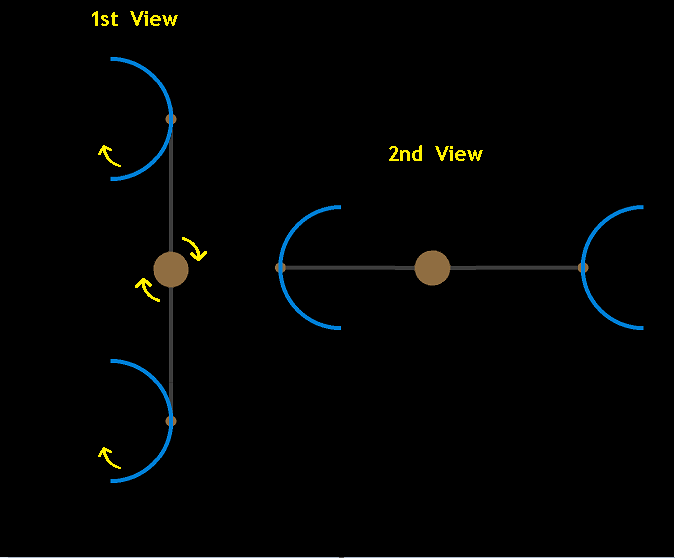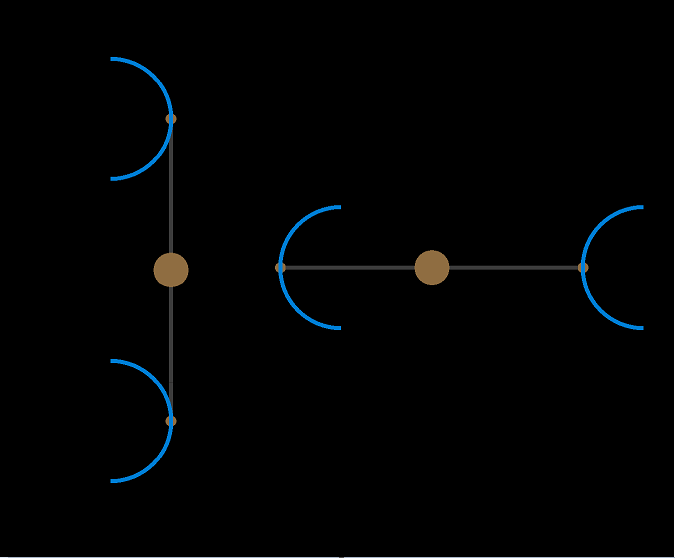-
Posts
24 -
Joined
-
Last visited
Profile Information
-
Favorite Area of Science
space
StarEagle1's Achievements

Quark (2/13)
0
Reputation
-

Does anyone have any thoughts about this propulsion concept?
StarEagle1 replied to StarEagle1's topic in Speculations
I really don't have much more on the concept. The middle object in there is an electric motor. Everything else, you have to figure out for yourself, but that's the fun of it. It was sort of like a hobby for me, and a way to learn a little at a time. -

Does anyone have any thoughts about this propulsion concept?
StarEagle1 replied to StarEagle1's topic in Speculations
Concerning the machine vibrating in one direction, I’m sure you must be right about the axis. Also, to me it sort of looks like it would surge forward every half rotation, but applying Newton’s third law, it should not go forward at all. I think with all the rotations on this concept it’s difficult to understand every opposite and equal reaction, at least for me. Because of that, I don’t think I’ll be completely satisfied until I try to build it one day and see that it just won’t work. I appreciate all the comments. -

Does anyone have any thoughts about this propulsion concept?
StarEagle1 replied to StarEagle1's topic in Speculations
There was one part of that description I forgot to put in. All rotations are suppose to go clockwise, I think. Now I'm done. If I attempt to build it later, I'll try to learn how things might equalize out. -

Does anyone have any thoughts about this propulsion concept?
StarEagle1 replied to StarEagle1's topic in Speculations
I (have) enjoyed it, and I think I'm done making these things up, but I'm not done learning about physics, as long as it's a little at a time. -

Does anyone have any thoughts about this propulsion concept?
StarEagle1 replied to StarEagle1's topic in Speculations
I forgot to give this simple thing a description and name.This device is suppose to propel itself on every half rotation somehow, because every half turn, one object rotates inward toward the main core while the other object rotates outward away from the main core. It's also suppose to be like a vibrating motor that only vibrates in one direction. It's name is the Off-Balance 1 Drive, or OB1 Drive, if you will. I'm surprised I haven't seen other similar devices. This one is so simple, it really is amusing! -
I should not have made that statement in that way, sorry. You may be correct, it might be better to try as soon as it seems possible.
-
I'm not a scientist, but this is so interesting I'd like to throw in a couple of speculative thoughts. If someday we could actually fly at (near) light speed, then maybe it would be easier to take the next step to FTL. Okay, hypothetically could the particles of a solid object, that are already traveling, be so energized with a strong electromagnetic field that they could then travel at a velocity of near light speed? And, if there were two objects attached to each other, would they fuse together in such a strong magnetic field? If you haven't guessed already, I'm thinking about a ship that some say disappeared, and then reappeared many miles from where it started, within a very short time.
-

Does anyone have any thoughts about this propulsion concept?
StarEagle1 replied to StarEagle1's topic in Speculations
I know, reactionless drives don't work. But, since this idea is so simple, I thought someone might be amused by it: -

Does anyone have any thoughts about this propulsion concept?
StarEagle1 replied to StarEagle1's topic in Speculations
I messed up some, but I'm still learning. Thanks for the help. -

Does anyone have any thoughts about this propulsion concept?
StarEagle1 replied to StarEagle1's topic in Speculations
Someone said that there's been other reactionless drives through history, but none have panned out. I've read a little about the EM Drive, but pretty soon I'm going to research more in order to understand better. Still though, I haven't yet found a specific reason why this propulsion concept won't work. -

Does anyone have any thoughts about this propulsion concept?
StarEagle1 replied to StarEagle1's topic in Speculations
I'm not sure about where I should ask this, but I left out a word on my last sentence. How many edits can we do, and what is the time limit to edit? Can we only edit our last post? I did a search on the word editing, but I didn't notice any rules concerning that. Is it OK to re-post my last post with a corrected version? -

Does anyone have any thoughts about this propulsion concept?
StarEagle1 replied to StarEagle1's topic in Speculations
At around 2:15 am, 3-18-2023, something came to mind about how the AgM propulsion concept might be working in a better way than I realized. Okay, when the device is spinning, say at 10k rpm, and mass #2's electromagnets disengage, then mass #1 will fly out on the rod pulling a portion of mass #2. Here it is; now when mass #1 gets to the end of the rod, it will hit the frame that is spinning with the device. That should jar the frame along with the complete whole device in that direction. At about the same time the frame is jarred, mass #2 engages it's magnets and pulls the complete whole device toward mass #1. So, I may be wrong, but there could be (3) forces together making the whole device go in the same direction at about the same time. 1.centrifugal force 2.jarring force 3.magnetic force Like I said, I could be wrong because I haven't thought about too long, or I might just be wrong period. -

Does anyone have any thoughts about this propulsion concept?
StarEagle1 replied to StarEagle1's topic in Speculations
I know, UAPs are unidentified, but I'm not sure it's a waste of time. Besides, I'm not trying to figure out a UAP drive, just a different kind of propulsion. I also don't think it's all guessing because there's at least a little science to it. I believe in using the scientific method, but right now I'm just hypothesizing with known forces like centripetal, centrifugal, and magnetic. For me, that stuff is fun. I may not be helping, but one day I hope that they come up with some kind of technology that can speed up our space program, just in case we have a gobal catastrophe sooner than later. I think it would also be nice if there were some kind of benefits from that space tech like devices that could lift up a disabled person so they would actually be able to walk and live longer. Okay, if the propulsion concept doesn't work, why not exactly? -

Does anyone have any thoughts about this propulsion concept?
StarEagle1 replied to StarEagle1's topic in Speculations
Just replying to the last post: I disagree that it's a waste of time to try to describe, or figure out the drive of UAPs. What I mean about UAPs is that we know they exist. People (are) able to identify things in the air sometimes. -

Does anyone have any thoughts about this propulsion concept?
StarEagle1 replied to StarEagle1's topic in Speculations
I'm sorry, I disagree. I think if we know something is real, like the moon, or UAPs, and we want to do more than just look at those things, then we should try to figure out how, even if we don't know how. Also, I apologize about how some of my words came out earlier. I tried to re-edit again, but it wouldn't let me. Sorry about that.



